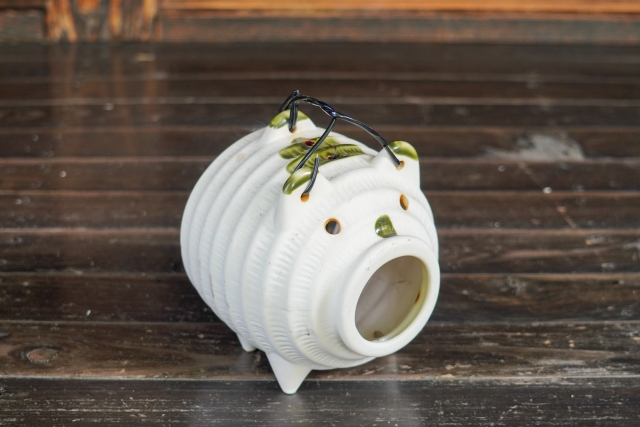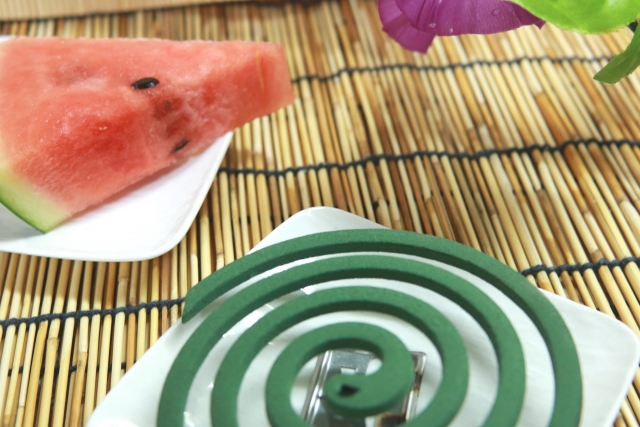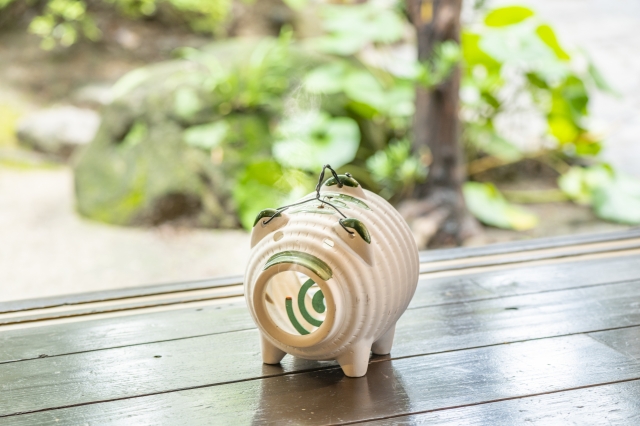A spiral of green incense, a faint smoky trail, and that unmistakable summer scent—katori senkō (mosquito coils) are woven into Japan’s warm-season memories.
Beyond nostalgia, they’re a clever design born from pyrethrum (chrysanthemum) and refined into a practical tool still used today.
What is it exactly, how did it begin, and do people in Japan still rely on it?
What Is Katori Senkō?

Katori senkō is a mosquito-repelling incense coil. A dried paste—traditionally containing pyrethrum derived from Tanacetum cinerariifolium—is extruded and formed into a spiral.
You light the outer tip; it smolders slowly toward the center, releasing a thin, repellent smoke.
Typical household coils burn for about 7 hours per piece, depending on size and airflow.
From Stick to Spiral: A Japanese Invention
In the late 19th century, entrepreneur Ueyama Eiichirō popularized pyrethrum products in Japan. The earliest coils were actually stick-shaped and burned too fast.
A pivotal idea—often credited to Ueyama’s wife, Yuki—was to thicken and curl the incense into a spiral. The result: longer burn time and improved stability.
The spiral form became a quiet masterpiece of everyday design: efficient, safe to lay flat, and easy to store.
How to Use It (Safely)

Place in a holder
Use a metal stand or a ceramic kayari-buta (pig-shaped holder) to keep the coil elevated and stable.
Light the outer tip
Let it glow, then gently blow out the flame so it smolders.
Give it air
Ensure light airflow so it burns evenly—but avoid windy spots where ash may scatter.
Ventilation
Use in well-ventilated areas; avoid enclosed spaces and keep away from curtains or bedding.
Ash care
Place on a non-flammable surface; dispose of ash only after it’s fully cooled.
What’s Inside the Coil?

Traditional coils used pyrethrum; many modern products use synthetic pyrethroids designed for consistent performance.
Some brands add fragrance oils (e.g., citronella-like notes) for a milder scent. Always check the label if you’re sensitive to smoke or fragrances.
Why It Feels Like “Summer in Japan”

The soft curl of smoke on a humid evening evokes festivals, fireworks, and open windows—an atmosphere captured in films, manga, and family memories.
The whimsical kayari-buta holder is more than a tool; it’s a seasonal ornament that signals summer has truly arrived.
Do People Still Use It Today?
In modern Japan, the classic smoky katori senkō is now mostly used outdoors—during camping trips, barbecues, or when watching fireworks at home.
The spiral coil has become more than just a mosquito repellent—it’s a symbol of summer nostalgia.

Indoors, most households rely on electric liquid repellents or one-push spray types that work instantly and produce no smoke.
These modern options fit urban living, where open windows are rare and air conditioning runs through the night.

Still, the kayari-buta—a pig-shaped ceramic holder often seen in anime and Japanese summer scenes—remains a beloved decoration.
Its round face and gentle curl of smoke evoke memories of quiet, humid nights filled with the sound of cicadas.
Even if fewer people light coils today, that smell of summer continues to live in Japan’s collective memory.
FAQ

Does one coil protect a whole room?
It helps reduce bites in the immediate area. For larger spaces, consider multiple points or pair with screens and fans.
Is the smell strong?
Classic coils have a distinct smoky scent many associate with summer. Fragranced or “low-smoke” versions are available.
Indoors or outdoors?
Both are common, but ensure good ventilation. Keep away from flammables and never leave coils unattended.

